Ecological Evaluation at Pine Bend Bluffs SNA
Prior to beginning restoration activities at a site, we typically spend a season evaluating it and preparing a management plan. That process was initiated this spring at a 40-acre addition to Pine Bend Bluffs SNA, at the far north end. In 1993 the area had been designated by the Department of Natural Resources as having high to outstanding biodiversity significance. Though untouched since then, the area is now severely altered by oak wilt, carpets of garlic mustard, buckthorn encroachment, and a new invasive species: narrow-leaf bittercress. It is apparent that simply leaving natural areas alone is not adequate for preserving native components of the historic plant communities. On-going long-term management is needed, and/or we may need a paradigm shift in how we view our natural areas.
With effects of climate change and other landscape changes, ecologists are recognizing three general strategies for ecological management: preventing change and attempting to create/preserve the historic condition, increasing diversity within the system to increase its resilience to changes, and facilitating anticipated changes by introducing new species expected to grow there in the future. Management of SNAs has primarily focused on the first method, using natural processes as much as possible to try to support native plant communities. SNAs are also focused, however, on preserving landscapes and corridors, especially at such key locations as along the Mississippi River. At some point, outside factors may overwhelm the possibilities for protecting the historic condition and other strategies are now being explored for how best to manage our natural areas.
In spite of alterations to the forest in recent decades, it still has a great diversity of native plants and animals, as shown in some of the photos below. During a brief June visit, 20 bird species were noted, including scarlet tanager, red-shouldered hawk, and mourning warbler all uncommon species in the Twin Cities metro.
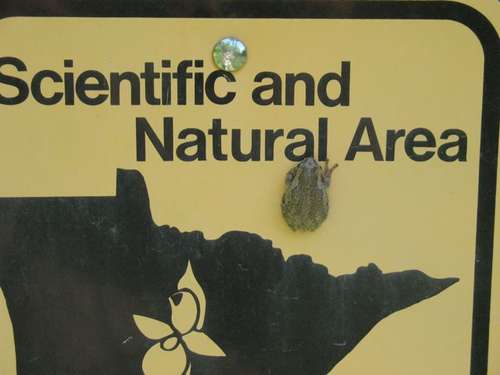
Even the signs at the SNA provide wildlife habitat! A gray treefrog tries to blend in.
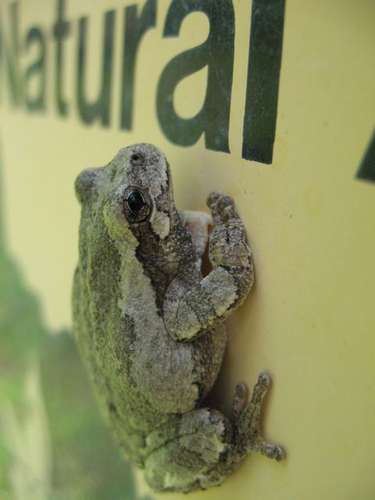
Gray treefrog, close up
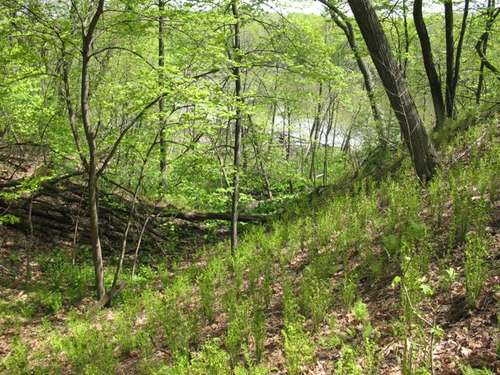
Pine Bend SNAs steep hills and ravines provide a variety of microclimates. Ferns, such as the lush interrupted fern shown here, typically cover the cooler, moister north-facing slopes.
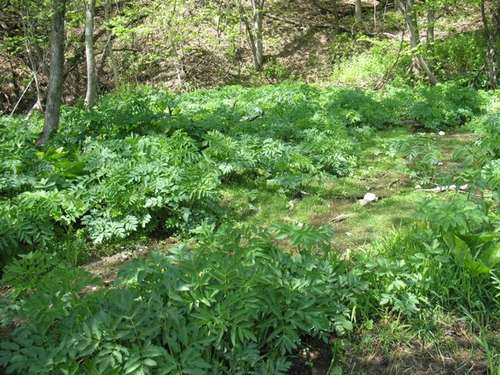
Seepage areas form along the base of the slopes at the river's edge, providing ideal conditions for black ash trees, cow parsnip, skunk cabbage and marsh marigold.
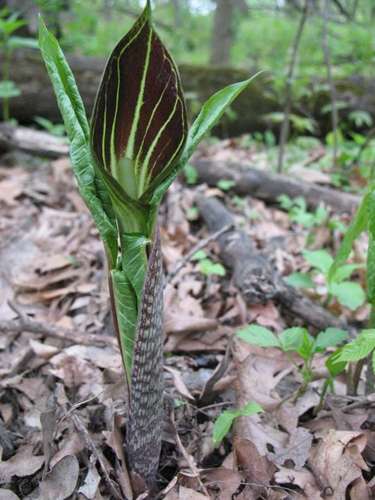
Jack-in-the pulpit is fully formed underground, so that when it emerges it simply opens up, the leaves ready to capture the suns rays and the flower almost ready to be pollinated.
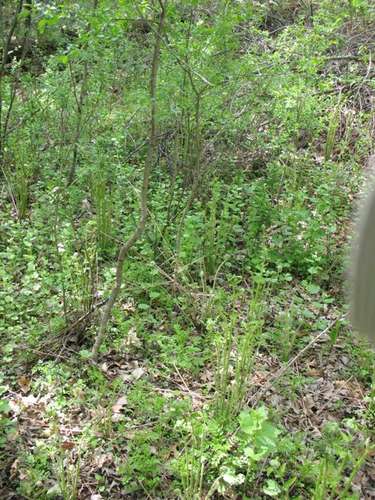
Non-native species at the site are abundant. Shown here is the trio of garlic mustard, common buckthorn and narrowleaf bittercress, an invasive species recently discovered in Minnesota.
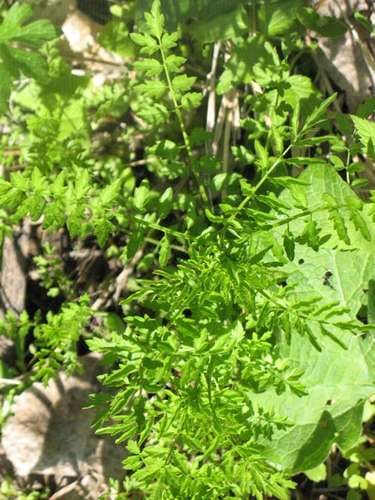
Narrowleaf bittercress is in the mustard family and grows as an annual or biennial. It has been most showing up primarily along the river in the Twin Cities.
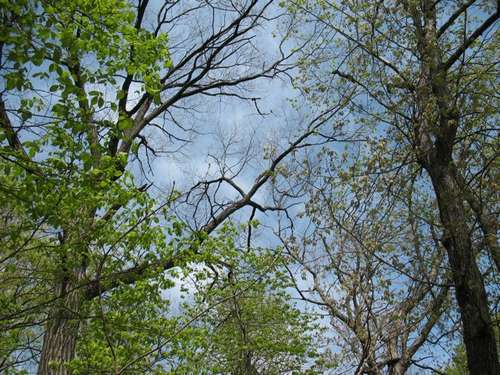
Oak wilt is also taking a toll at the site. The red oaks have been hit hard.
Restoration Ecologist and Project Manager Karen Schik